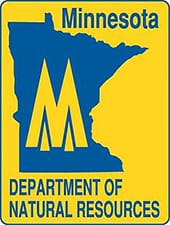

ST. Paul, MN -(Ammoland.com)- Hunters can harvest Canada geese in west-central Minnesota from Saturday, Aug. 9, through Sunday, Aug. 24, the Department of Natural Resources said.
Individual hunters are allowed to shoot up to 10 Canada geese per day, but there is no limit to the number of Canada geese a hunter can possess.
“The state’s Canada goose population remains high, and more goslings hatched this year than last,” said Steve Cordts, waterfowl specialist for the DNR. “In the western portion of the state, large numbers of Canada geese continue to damage crops. The August management action is one way to control goose numbers.”
The August goose harvest will open only in the intensive harvest zone in west-central Minnesota, with shooting hours from a half-hour before sunrise to a half-hour after sunset. A small game hunting license, special goose permit and state waterfowl stamp are required. A federal waterfowl stamp is not needed; however, it is needed to hunt geese and other waterfowl beginning in September.
“This is the second year we have held an August goose management action,” Cordts said. “Last August, hunters harvested about 25,000 Canada geese. Hunter success is dependent on weather, progress of small grain harvest and other factors.”
The DNR in August will announce details of fall waterfowl seasons, including the September Canada goose season that runs from Saturday, Sept. 6, through Monday, Sept. 22, and the regular Canada goose seasons that tentatively begin Saturday, Sept. 27. Details on the August goose management action can be found at MNDNR Waterfowl.
About the Minnesota Department of Natural Resources (MNDNR)
The Minnesota Department of Natural Resources is the agency of the U.S. state of Minnesota charged with conserving and managing the state’s natural resources. The agency maintains areas such as state parks, state forests, recreational trails, and recreation areas as well as managing minerals, wildlife, and forestry. The agency is currently divided into sections Ecological Resources, Enforcement, Fish & Wildlife, Forestry, Lands and Minerals, Waterways, Parks and Trails, and Waters.
